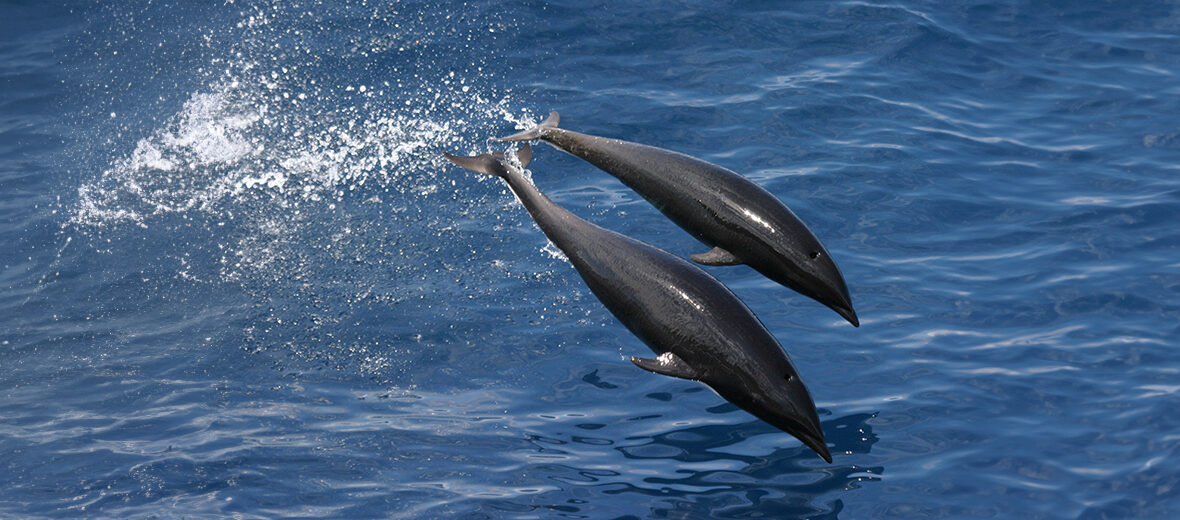
The northern right whale dolphin is but 1 of 2 species of right whale dolphin. They not only lack a dorsal fin, but they also look a bit like a porpoise. These critters inhabit the cold and temperate waters of the North Pacific Ocean. They face the threats of overfishing, pollution – in the form of PCBs, and are subjected to bycatch, but these cetaceans are abundant enough to be listed as Least Concern by the IUCN. Their population trend is unknown.
First the Stats…
Scientific name: Lissodelphis borealis
Weight: Up to 220 lbs.
Length: Up to 9.8 feet
Lifespan: Up to 42 years
Now on to the Facts!
1.) These dolphins have up to 95 sharp teeth.
2.) They are social and travel in pods of up to 110 individuals. However, huge pods of up to 3,000 dolphins have been documented.
3.) Being gregarious they often associate with Pacific white-sided dolphins, Baird’s beaked whales, Dall’s porpoises, humpback whales, pilot whales, Risso’s dolphins, and sperm whales.
4.) These acrobatic dolphins can leap up to 22.97 feet distances when breaching the water.
5.) They can dive up to 660 feet deep.
But wait, there’s more on the northern right whale dolphin!
6.) Calving takes place between July and August.
7.) Females undergo up to a 12.3 month gestation (pregnancy) that yields a single calf.
Did you know…?
Northern right whale dolphins are relatively fast swimmers, as dolphins go, that can swim upwards of 25 mph.
8.) The female will reproduce approximately every 2 years.
9.) Squid and various fish make up their diet.
10.) They are sometimes seen performing various acrobatics, like belly-flopping, breaching (where the dolphin can clear up to 40% of their body from the water), side slapping (a behavior meant to alert other dolphins of a potential threat), and lobtailing (tail slapping). These critters also engage in bow riding (riding the wave created from the bow of a boat or ship).
But wait, there’s still more on the northern right whale dolphin!
11.) Unlike other dolphin species, these critters don’t rely on whistles, but rather on clicks and burst–pulses.
12.) The loss of whistling may have been evolutionary and resulted from a number of things, like predator avoidance, school size, and/or school species distribution.
Did you know…?
It is estimated that up to 68,000 northern right whale dolphins currently inhabit the Pacific Ocean.
13.) This dolphin species was first described in 1848 by Titian Peale.
14.) The epithet of the genus hails from the Greek word lisso, “smooth”, and delphis; the specific epithet, borealis is indicative of the northern distribution.
15.) Their biggest threat is that of drift nets that are used for large-scale squid fishing.
Now a Short Northern Right Whale Dolphin Video!
Be sure to share & comment below! Also, check out the Critter Science YouTube channel. Videos added regularly!
Want to suggest a critter for me to write about? Let me know here.
Some source material acquired from: Wikipedia & IUCN
Photo credit: NOAA NMFS



